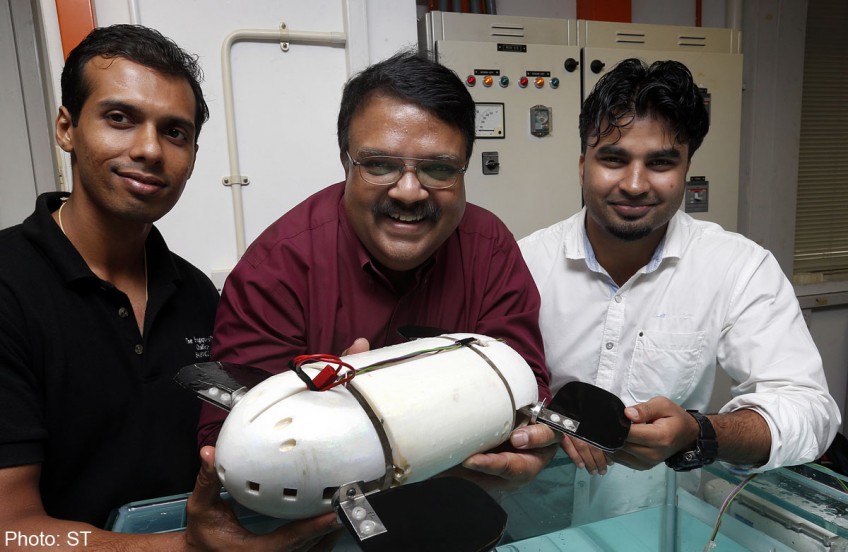Robo turtle may take plunge for tough tasks


Call it turtle power. Researchers in Singapore have developed a robotic turtle that could carry out dangerous and difficult underwater tasks, replacing the need for people to do them.
The turtle is small and light - measuring just 50cm by 30cm and weighing about 800g - and can be loaded with different sensors and equipment to carry out the tasks.
Researchers from the National University of Singapore (NUS) said they have so far tested the turtle's movements only in the campus swimming pool, to a depth of 2m.
But they also worked on four other versions, including a robotic fish and a spherical robot that mimics a puffer fish in structure but uses a jet propulsion system modelled after jellyfish and squids.
These four variations have been been tested in swimming pools of up to about 4m in depth, and with payloads such as cameras, sonar sensors, and an on- board navigation system that helps them to manoeuvre and avoid obstacles by themselves.
The turtle is able to negotiate sharp corners without losing speed, using its four paddles. It can also move vertically and horizontally, unlike the team's robotic fish that can only move downwards diagonally.
"Being able to sink vertically means the turtle can enter vertical tunnels as well as pipes in the seabed," said Associate Professor S. K. Panda, who leads the team at the NUS Department of Electrical and Computer Engineering.
"Being small and light, it can also carry heavier payloads to perform complicated tasks, such as surveillance and water-quality monitoring in Singapore reservoirs."
The researchers said they could combine their various robots' features to create a single machine that can react to its environment, for example, by using sonar to detect and avoid obstacles.
This would be similar to how Roomba vaccum cleaners use sensors to clean floors by themselves.
The NUS team also wants to embed solar panels in its next version of the turtle robot. This would enable it to carry out longer missions. Currently, its battery lasts up to one hour.
"Theoretically, the turtle would shut down and float to the surface when its battery runs out," said research engineer Bhuneshwar Prasad.
"The solar panels would then generate power for it to keep going."

This article was first published on December 23, 2014.
Get a copy of The Straits Times or go to straitstimes.com for more stories.